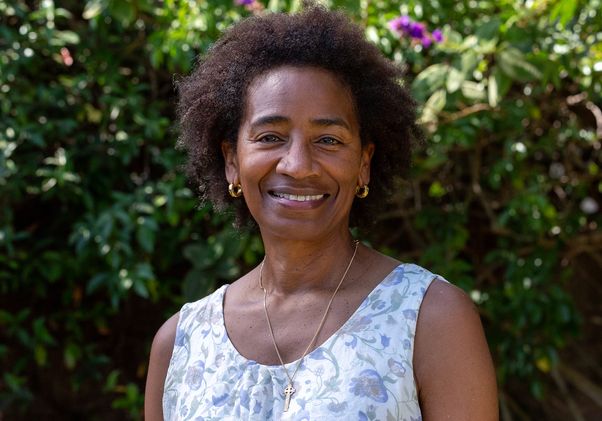Environmental news often focuses exclusively on the most extreme problems, from climate catastrophes to extinctions.
While it’s important to understand these concerns, there are reasons for hope at UCLA, where faculty, researchers and students are finding solutions — technology to reduce environmental harms, ways of adapting to new climate realities, and strategies for battling environmental racism and injustice.
Marilyn Raphael, world-renowned environmental leader, climate scientist and director of UCLA’s Institute of the Environment and Sustainability, shared some environmental good news as we celebrate the planet we all depend on this Earth Day.
Over the past few decades, we’ve witnessed a growing number of localized problems from worsening storms to urban heat islands, due to climate change. These are the problems UCLA students and researchers are trying to address.

Ashley Kruythoff/UCLA
Marilyn Raphael
The ways we’re working to mitigate climate change are too many to list. But I’ll start in our own backyard — Los Angeles and California. We’re doing an enormous amount of research to understand and respond to wildfires, droughts and extreme flooding. Our faculty collaborate with state and municipal agencies so that disaster prevention and response can be informed from solid projections and data. Although flooding in a megadrought is not something you can imagine, research shows that climate changes are increasing the likelihood of flooding. California must be ready. Stockton, Sacramento and large parts Los Angeles could be affected by these extreme events. We need a plan for how we’ll react when that happens.
Looking globally, we’re working in places such as the Congo Basin, where we help local populations learn sustainable agriculture practices that can sustain their communities while protecting the environments they depend on. We also focus on small islands nations. These are the most vulnerable to hurricanes, depleted fisheries, and sea-level rise.
How can climate leaders tackle the seemingly insurmountable issue of global climate changes? What are the most promising solutions to this crisis? How can we stop it or slow it down?
From the start, I think it’s important to understand we now have unavoidable change. There is a way to slow down the pace and make it less severe if we act quickly. Globally, we have not done enough to reduce emissions to a point that will change our trajectory.
One of the most important things we’re trying to do is to mobilize people with information and the means with which to engage with these issues in creative ways, from film to art installations. Researchers are more excited about data than anyone else. So we’re working on understanding and improving how people interact with their realities.
Sustainable cities are another part of our solution. More and more people (55% of the world’s population live in urban areas – headed for 68% by 2050) are living in cities, which makes them one of our best chances at getting more sustainable. How people get water, power, food — cities can become more efficient at all of it, and we have researchers laying a strong foundation for them to do so.
Could you share some examples of new ways that ecosystems and species are being protected?
UCLA researchers are developing new ways to use genetics to improve conservation efficiency and effectiveness. California Conservation Genomics Project is sequencing thousands of organisms from across the state to create the largest multispecies genomic data set. This can then be used for local and regional conservation concerns as well as protecting biodiversity.
Genomic research is also used to understand things such as how climate change is affecting migratory bird species, how animals disperse their seeds in tropical regions, and many other aspects. And that’s just genomics. We’re also combining field research with remote sensing data from NASA to look at the health of our forests, and we are engaging the indigenous groups who manage 25% of the world’s natural lands and have intimate knowledge of their environments stretching back millennia.
Mental health professionals are increasingly seeing people who have difficulty dealing with environmental threats and the realities they perceive. What would you say to someone who has such feelings?
Please, don’t just sit with your fears. Get out there and spend some time in nature — see what’s worth protecting. Spending time among oceans, mountains, forests or parklands is a salve for mental well-being, and there’s a growing body of psychological research to support this.
You can also use this method to reduce anxiety and stress related to climate change. It doesn’t have to be big; it could be something small. Engage your friends and then do the same. Don’t focus continuously on the whole problem — it is impossible for a single person to do anything reasonable to solve it. We are all interconnected parts of a larger, more complex system. Because of this connection, our actions as individuals have an impact on the system. Do what you can, and believe that others will do the same.



